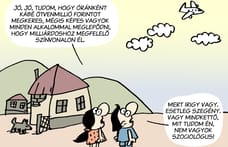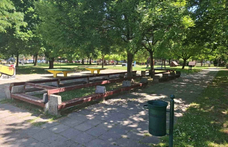Tamas Barta - victim of a drugs ring?
It was 26 years ago that Tamas Barta, singer-guitarist in the band Locomotiv GT, died in Los Angeles. Many consider him to be the greatest ever Hungarian guitarist. He died from a bullet to his head under circumstances that remain a mystery.
Barta, Frenreisz, Laux and Presser in 1972 © www.passzio.hu |
In 1962, Barta started his studies at an electrical engineering technical school, where he was a classmate of Mikos Fenyo. As Fenyo told hvg.hu, both were kicked out in 1964 for non-attendance. One teacher remembers that three-quarters of their time was devoted to rock'n'roll and the rest to girls. They didn't meet for a year, until Barta turned up at a rehearsal for Syconor, Fenyo's band of the time.
He borrowed the guitar and began playing, impressing the rest of the band enough that they took him on immediately. Fenyo says Barta learned his instrument by himself in just one year - in 1964, he hadn't been able to play at all. Admittedly, he already had basic musical knowledge - he had studied the violin.
Barta stayed with Syconor until 1967. Later, he did his military service, frequently performing alongside Syriusz. He started playing with Fenyo again from 1969. He joined Hungaria and played in that band's first album, Concert on Mars, which was released in 1970. He then joined LGT.
The LGT in Budapest © www.passzio.hu |
Compare Illes in 1966 with the same band in 1971, for example. It's natural that Barta - who had the talent not to follow but to reshape Hungarian rock music - simply found himself in a supergroup. Karoly Frenreisz says: "He could make full use of his progressive guitar skills in LGT."
Tamas Barta was first-class not just as a guitarist but also as a composer. Several of the 20 LGT songs he wrote became huge hits and continue to be among the band's most popular songs.
Karoly Frenreisz left LGT in 1973. There was one problem with Tamas Somlo, the new saxophonist-guitarist-singer. He couldn't play bass guitar. Somlo told hvg.hu that he sat every day from 11 to 4 in the afternoon in Barta's Izabella utca flat and learned to play the bass guitar. At the beginning, he played the easier bass lines and Barta played the more difficult ones: "It's not hard to play the bass if you're a good guitarist," he said.
Barta: 1976, California. Photograph by his mother. |
He had several reasons for staying. He loved the US, and he was convinced he would have a great career there. In 1985, Somlo wrote: "His problem was that in Hungary he had no money and no flat. He lived with a girl in her flat on Izabella utca. He said, 'Look at California, the palm trees, the sunshine, the sea. I don't want to carry coal and wood up to the third floor ever again.' There was some truth to this bitter remark." The death of his father severed another tie to Hungary.
Thirty years later, it might seem that Barta made the mistake of his life. Tamas Somlo was probably right when he wrote: "It was a bad move on his part. I was angry with him. I tried to tell him to come back with us." Sarolta Zalatnay agreed: "LTG's success was due to Barta," she said.
Jozsef Toth, drummer for Hungaria, emigrated in 1971. He was a close friend of Barta's. "I told him in Los Angeles that he should go back home, but I couldn't persuade him," he said.
Tamas Barta never returned to Hungary. He performed, but he didn't get the career he dreamed of, the one his talent deserved. He did deals, traded in paper, before being murdered in 1982. There are question marks over his death. Some say he got involved with the mafia, while others say he took cocaine and owed money to his dealer. Some even think it was just a tragic mistake, and that the bullet was meant for someone else.
Judit Hajdu, who lived with Edit Friedmann, Barta's mother, for the last three years of his life, believes two death certificates were prepared. The first gave a shot to the head as the cause of death, the other suicide. Both she and his bandmates reject the possibility of suicide - though a life insurance company refused to pay out because of this second death certificate.
Jozsef Laux, who also settled in Los Angeles in the mid-1970s, insisted the guitarist had no maffia connections. He had met with Barta a few times, although their relations had been cooler than in Budapest. Laux also rejects the suicide theory. The former drummer visited Barta's former Los Angeles business partner, Barna Fekete, in 1998 in Hawaii.
Fekete believes he was the last person to see Barta alive other than his murderer(s). He left Barta in the early afternoon, phoning him at 5.30. Instead of Barta, however, a police detective picked up the phone. Fekete is convinced that the local Hungarian "paper maffia" was uninvolved in the murder. Nor does he think suicide is a likely explanation. "Two bulllets were shot from the gun. You can't shoot yourself twice." He believes Barta was murdered by a Columbian drugs ring. "Tomi bought drugs from them, and he wanted to sell them on,"
Laux said 10 years ago.
Barta's remains were cremated and scattered from a helicopter. Nobody is quite sure whether they were scattered in the Sierra Nevada or over the Pacific.
Péter Szegő














